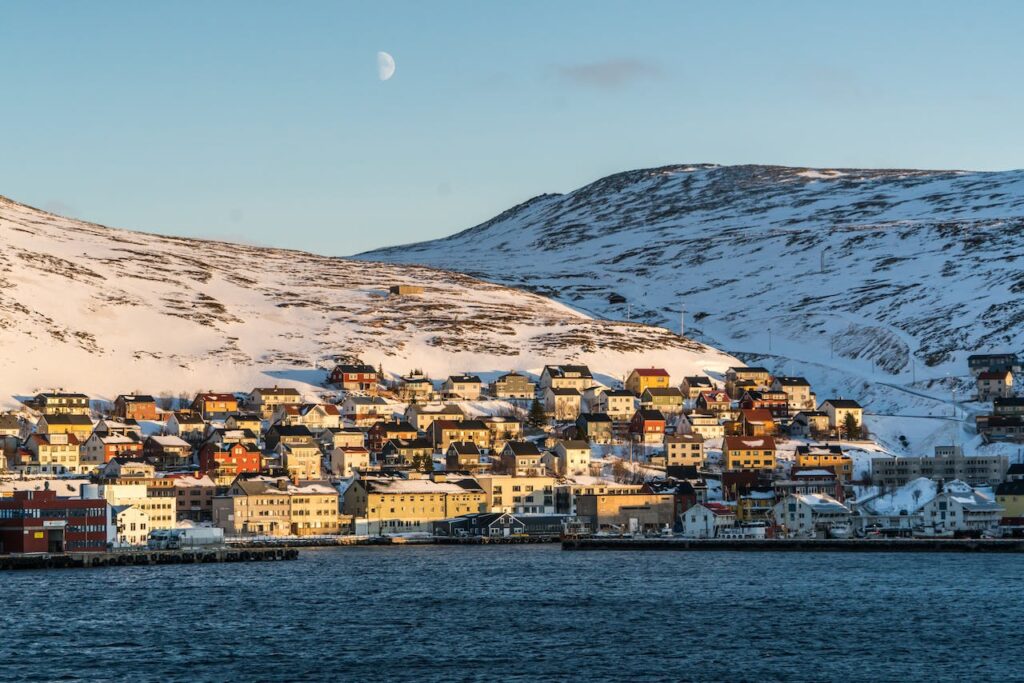Norway: A Journey Through the History and Geography of a Nordic Kingdom

Norway, this realm of mystical fjords and mesmerizing Northern Lights, has always been a country that has captured man’s imagination. Its geography is as diverse as it is fascinating, its natural landscapes are stunningly beautiful, and its history is rich and complex. This Nordic country is a real treasure trove for nature lovers and history buffs.
The Origin of Norway: A Country Sculpted by Glaciers
Norway is a country of contrasts, where rugged mountains meet deep fjords and dense forests give way to arctic tundras. This geographical diversity is the result of millions of years of geological processes. Glaciers, during the Ice Age, sculpted the Norwegian landscape, creating deep valleys and spectacular fjords.
Norway’s Ancient History: The Vikings and Their Exploits
Norway’s history dates back to prehistoric times, but it was the Viking Age, between 800 and 1050 A.D., that really put Norway on the world map. The Norwegian Vikings were skilled navigators and fearsome warriors who traveled far, even reaching as far as North America.
- Viking Raids: The Vikings were known for their daring and sometimes violent raids on Europe. They plundered monasteries, conquered territories, and established settlements.
- Viking Exploration: The Vikings were also great explorers. Leibniz Erikson, a Norwegian Viking, is even credited with being the first European to reach North America, nearly 500 years before Columbus.
- Viking culture: Despite their reputation as raiders, the Vikings were also traders, craftsmen, and poets. They had a rich oral and artistic tradition, as evidenced by the Viking sagas and the art of wood carving.
The Kalmar Union and the Union with Denmark
Beginning in the 14th century, Norway was gradually absorbed into the Kalmar Union, which also included Sweden and Denmark. This marked a period of Danish dominance, where Norway lost its independence for several centuries.
The Independence and Constitution of Norway
At the beginning of the 19th century, the winds of change began to blow over Norway. In 1814, inspired by the American and French revolutions, Norway adopted its own constitution. Although the country entered into a union with Sweden that same year, the constitution laid the foundation for independent governance and marked an important step towards full sovereignty.
Norway during the World Wars
The 20th century saw Norway be dragged into both world wars. During World War I, Norway remained neutral but suffered considerable economic losses due to blockades. World War II saw Norway occupied by Nazi Germany, a dark period in Norwegian history that left lasting scars.
The Modern Geography of Norway
Modern Norway is a country of mountains, fjords, forests, plateaus and glaciers. It is famous for its spectacular landscapes, including the Hardangervidda Plateau, the largest high mountain plateau in Europe, and the Sognefjord, the longest and deepest in Norway.
- The Mountains: The mountains of Norway are a sight to behold. The highest point is Galdhøpiggen, which rises 2,469 metres above sea level.
- The Fjords: The fjords of Norway are world-famous for their striking beauty. These long stretches of salt water are surrounded by steep cliffs and are the result of thousands of years of glacial erosion.
- Forests: Almost a third of Norway is covered by forests, which are home to a rich biodiversity. Norway’s boreal forests are a haven for many species, including brown bears, lynx, and elk.
Life in Norway today
Today’s Norway is a prosperous and developed country, known for its high quality of life, quality education system, and commitment to environmental protection. Norwegians are proud of their cultural and historical heritage, but they are also forward-looking, constantly seeking to innovate and progress.
The Norwegian Economy
Norway’s economy is a balanced mix of public and private sectors, with a heavy dependence on natural resources. The country is one of the world’s largest exporters of oil and gas, which has contributed significantly to its economic prosperity.
- Oil & Gas: Norway is the third largest exporter of natural gas in the world and ranks in the top 15 for oil. Oil and gas revenues account for about 20% of the country’s GDP.
- Fishing: Norway has one of the largest fishing industries in the world, mainly exporting salmon and cod. Fishing is an important part of the Norwegian economy, contributing about 1% of GDP.
- Renewable Energy: Norway is a world leader in renewable energy, especially hydropower. More than 98% of the electricity produced in Norway comes from renewable sources, mainly hydropower.
Norwegian culture
Norwegian culture is rich and diverse, with influences from the indigenous Sami peoples, Vikings, and other European cultures.
- Music: Norway has a vibrant music scene, ranging from traditional folk music to modern pop. The country is also known for its strong commitment to jazz, black metal, and electro-pop.
- Literature: Norwegian literature has produced many internationally renowned authors, including Henrik Ibsen, Knut Hamsun, and Jo Nesbø. The country also prides itself on its oral tradition, with folk tales and sagas dating back to the Viking Age.
- Art: Norwegian art is varied and innovative, with famous artists like Edvard Munch, whose work “The Scream” is one of the most famous in the world. Norway also has a vibrant contemporary art scene.
Conclusion
Norway is a country that has survived the test of time and the elements, sculpted by glaciers and shaped by history. Its diverse geography offers striking landscapes, while its rich history offers a fascinating glimpse into northern culture. From the Viking Age to the union with Denmark, every moment in Norway’s history adds another layer to its cultural and historical richness. Whether you’re an intrepid traveler or a history buff, Norway has something for everyone.
Copyright 2023 holidaysnorway.uk

